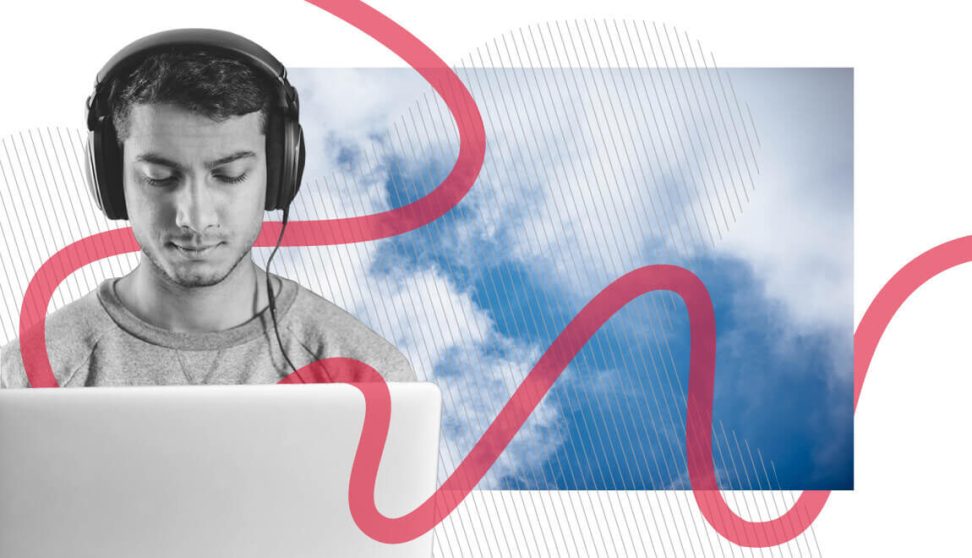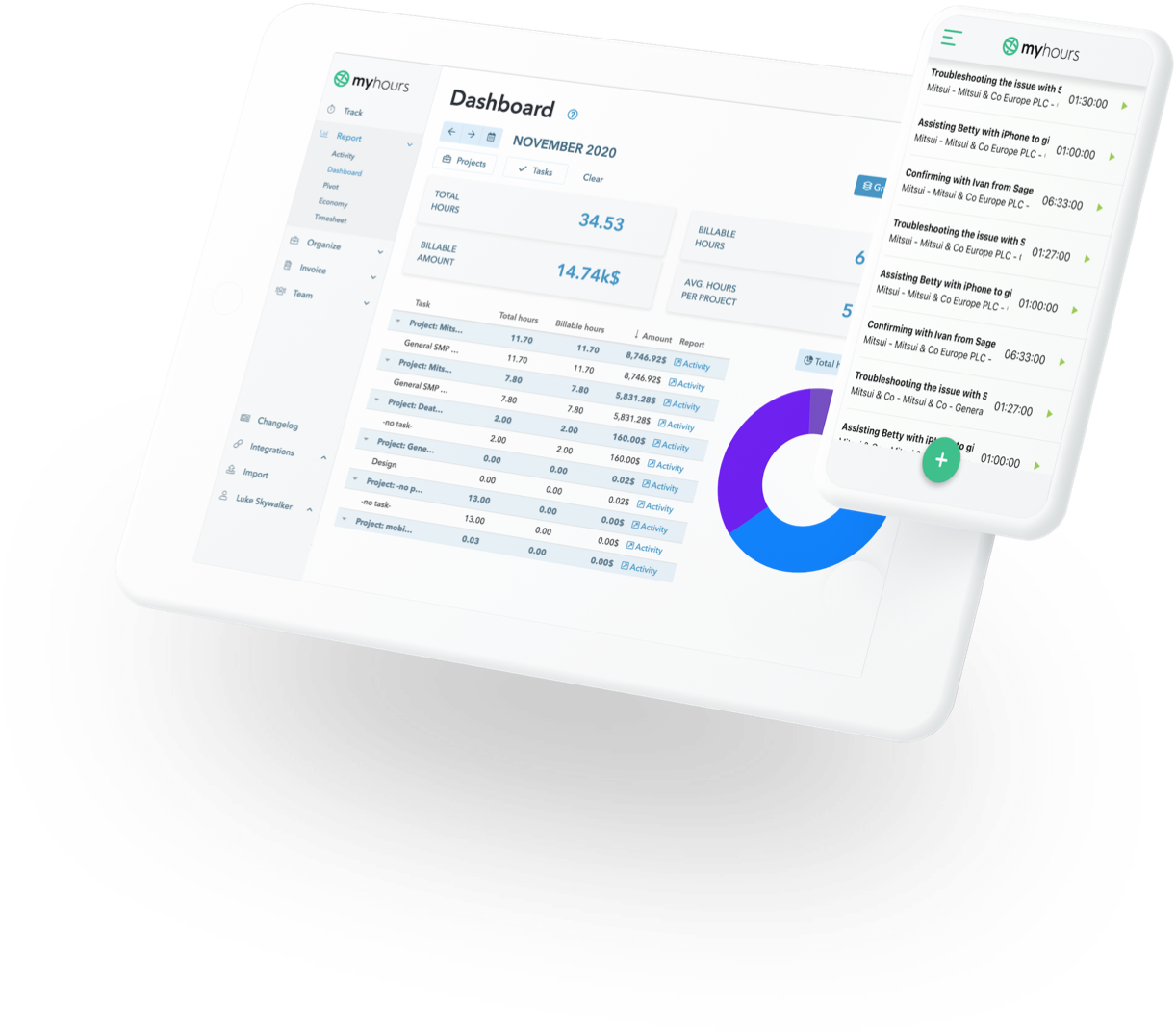Interruptions at work – Why are they a problem and the best ways to handle them

Studies show that the average worker is interrupted somewhere between 4 to 12 times every hour. That’s one interruption every 15 minutes, in the best case scenario.
It might seem like a huge number, but when you consider all the possible distractions, from phone calls, app notifications, chat messages and coworkers stopping by, it’s obviously a very realistic number and a huge productivity issue.
And it’s not only the frequency of interruptions. After you are interrupted, it takes 10 - 20 minutes or even more to concentrate and get back to the task at hand at full productivity level.
With all these interruptions and refocusing, the working day can end before you know it, with zero productive work done. In this blog post you will learn the best ways to handle interruptions at work.
- Identify your main interruptions at work
- Build a system that prevents interruptions at work from happening
- Pre-scheduled no interruptions time – the best productivity advice ever
- A no-interruptions personal day
- How to recover the fastest when you are interrupted at work
- If you are a manager your job is to minimize distractions at work
Identify your main interruptions at work
The first step is to identify your main interruptions at work. Some of them might be related to the nature of your work, others might be the type of distractions you’re most prone to.
We all handle some distractions easier than others. Below is a list of all the potential interruptions that can happen at work.
- Phone calls
- E-mail notifications
- Messages
- Chat apps
- App notifications
- Coworkers stopping by (or your family members if you work from home)
- Managers (interrupting your work and demanding something)
- Meetings and virtual meetings
- Social media
- Daily news sites
Rate them from 1 to 10 to see which distraction causes you the most trouble.
Frequent interruptions lead to lower productivity, more errors and erode willpower. They can also cause irritation and anxiety.
Build a system that prevents interruptions at work from happening
The best way to deal with interruptions at work is trying to eliminate as many of them as possible, way before they get a chance to take you out of the workflow.
Don’t count on your self‑discipline when it comes to interruptions, because they often come from external sources, and although you may have excellent self-control when it comes to perusing social media during work hours, you can’t control what others may ask/demand of you.
The only way to win this fight is to “outsmart” interruptions. You can do that by building yourself a system and a set of strict rules to follow. And some rules you will also have to gradually get your coworkers accustomed to.
The main point of such a system is that you won’t need too much self-discipline to handle interruptions and to minimize inner struggle (for example when you get an e-mail notification and then you torture yourself as to whether you should read it or not).
Here are examples of some such rules, out of which you can build yourself a system that works best for you:
- Wake up 2 hours before everybody else. Immediately do the most important task of the day.
- When you are in a flow, put a “do not disturb” sign on the door, turn off your phone and disconnect from the internet. You can call back and reply to everyone when you are finished.
- When you are in a flow, put headphones on, even if you aren’t listening to music. There’s a lesser probability anybody will disturb you.
- Have a few spots away from your office desk where you can work in peace (a meeting room, home office, coffee shop, …).
- Clearly let people know which hours of the day you’re not available. For example, if you have a red flag on your desk, it means you should absolutely not be disturbed.
- You have one hour for emails per day, so answer all emails as quickly as possible in a single sprint in the afternoon. Don’t have an e-mail open while you do the productive work.
- Install a site blocker (like StayFocused) so you can’t open news sites and social media when at work.
- Have a short 15-min morning sync meeting with your boss or team so all necessary information for the day is exchanged, and no further interruptions are needed.
- Take one day in the working week to work the whole day without any interruptions (a little bit more about that later).
Or to keep it short and sweet:
- Close your e-mail
- Put your phone on “airplane mode”
- Turn on webpage blocker in your browser
- Put on your headphones (preferably without music)
- Put a “do not disturb” sign on your office desk
Work in peace for 2 – 3 hours.
Since there are so many distractions out there and they are an integral part of our lives, it’s necessary to invest quite a lot of effort into managing them properly.
You must understand your working environment well and your personal weak spots extremely well, and then grab the most appropriate tools, rules, and techniques to build yourself a unique system that works for you personally.
Of course, when building such a system you have to keep in mind what your superior would approve of, and what you can gradually get your coworkers accustomed to.
But, at the end of the day, you have to kind of outsmart yourself and the working environment you operate in. You should never rely on self-discipline when it comes to interruptions, because this is not how you win the productivity game.
Interruptions are just too addictive. Rather, think of yourself as an architect of a system that will enable you to be super productive without self-struggle.
Now let’s deep dive into one of the best tools to deal with interruptions – pre-scheduled no interruption time.
Pre-scheduled no interruptions time – the best productivity advice ever
One of the best ways to handle interruptions and skyrocket your personal productivity or the productivity of your team is to have pre-scheduled, no interruptions time at the office.
It can be, for example, two hours each day at the same time (easier to implement), or you can have a whole day in a week when interruptions are not allowed (harder to implement).
|
No interruptions at work allowed |
|
|
Option 1 |
Option 2 |
|
Every day from 10am to 12am |
Every working Friday in a week |
The second option, oftentimes called the no-interruptions day technique, can not only do wonders for productivity, but also for the attention span.
Imagine how much you can achieve if you work the whole day without any distractions on your most important tasks, and all the attention brains have, being far away from constant distractions.
The only good interruptions are the ones that are well timed. Well-timed interruptions are the ones that don’t interrupt our meaningful work.
It’s extremely hard to turn off the phone and email for the whole day. But doing the hardest things brings the best productivity results. If you dare to experiment with no interruption days in your work life or with your team, two things usually happen.
(1) The first few “no-interruption days” are very hard on people. We are not used to being uninterrupted. Thus, in the beginning we all lack the ability to concentrate and focus for a longer period of time.
But with every no interruptions day, things get better and easier. And being able to concentrate for long hours is one of the important competitive advantages you and your teammates can have. So, such training is definitely worthwhile.
(2) As well as this, everyone is totally surprised about how much more work can be done in a day without interruptions. Having time alone with no distractions allows you to connect with yourself, your creativity, and to push yourself into the workflow very easily.
It’s a great motivator to invest even more effort into properly handling interruptions on all other days. And don't forget to track the time you work with no-interruptions.
A no-interruptions personal day
A no-interruptions day can also be a great tool to advance your personal goals. It’s the same concept, but with the purpose of working on the most important projects and goals you want to do or achieve in your personal life.
On a weekend you can, for example, schedule a no-interruptions day with the following themes:
- Creative day: Creating new ideas and projects, innovating, writing down ideas
- Project day: To work on complex personal projects (remodeling a house…)
- Research day: To do research on a specific topic or to acquire as much knowledge as possible
- Planning day: Planning your future or your financials, setting goals etc.
- Thinking day: Thinking about life, new cognitions, connecting with yourself
You can simply open your calendar, schedule a personal no-interruptions day, and decide to what kind of work you will dedicate a whole day to. Who needs a mobile phone when you can devote your hours to some real meaningful work?
How to recover the fastest when you are interrupted at work
Even when you minimize interruptions and distractions, they will still happen. It’s impossible to completely avoid them. And now we know the main problem of interruptions - once you’re taken out of the workflow, you need a lot of willpower and time to get yourself back on track.
A great piece of advice for quickly recovering after an interruption is the following: Once you see that an unavoidable interruption is coming your way, make sure you leave your work somewhere in the middle, in a state from which you can quickly take off.
To recover after an interruption, leave a chunk of work halfway done. Leave a sentence undone, a piece of code written halfway through, a half‑drawn circle on your design, or whatever else you need to.
The usual reaction to interruptions is to finish that chunk of work, the plan being to start working on a new chunk when the interruption is over. Thus, if possible, you should take a minute or two, finish the chunk and then give in to the interruption.
The problem is that afterwards when you get back to work you don’t have an easy pinpoint from which to continue. That’s why it’s so hard to fall back into the flow after being interrupted.
Conversely, if you have only half of a sentence written, you can immediately start completing it after you come back to your work. You can also immediately remember what you wanted to do with the sentence and finish it.
That should automatically lead you to the second and third sentence and to fall back into the flow.
The second you are interrupted, or you see an interruption coming your way, think about the best hook that will drag you back to work and into the flow as soon as possible. In this case, unfinished work might be the best way to achieve that.
If you are a manager your job is to minimize distractions at work
Most managers feel they have the right to interrupt any of their team members whenever they like, but that’s not the mindset of a boss who wants their team to be super productive.
One of the main tasks of every boss is to create an environment where people can work in peace and perform. So, even interruptions from superiors should be structured and planned in advance.
A great manager or boss devotes much of their energy to improving the environment and people’s habits in order to minimize interruptions and distractions.
Even more so, they experiment with different tools and approaches, such as no-interruption days, to create as productive an environment as possible. Creating such a productive environment automatically improves employees performance.
And all these approaches must be much more than just blocking social media, which usually leads to a negative result. It must be something that’s also fun, done in team spirit, and in the right systematic way.
Remember. The biggest killers of workflow, the most productive state for a human being, are interruptions.
When someone or something interrupts you, or when you interrupt someone else, an enormous amount of willpower is needed to get yourself back into action. Thus, every interruption not only takes time, but also willpower.
Handling interruptions is on of the key time management skills. Now you have some tools and ideas how to minimize interruptions and win the day in a productive way.
Use them, to minimize interruptions in your own life. And if you are a manager, also in every working day of your teammates.








